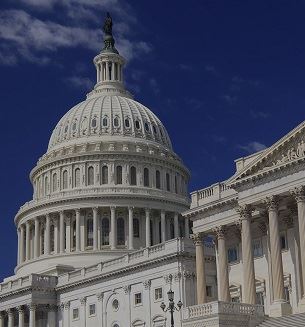Trusted Federal Crime Attorney: Comprehensive Defense Against Federal Allegations
Trusted Federal Crime Attorney: Comprehensive Defense Against Federal Allegations
Blog Article
Debunking the Process of Federal Appeals: What You Need to Know
Navigating the elaborate world of government allures can often appear like passing through uncharted waters for those unknown with the procedure. Recognizing the subtleties of appellate court territory, the details of filing a notice of appeal, presenting a compelling brief, and making a persuasive oral argument are important elements that can substantially affect the result of a situation. By unwinding the layers of intricacy surrounding federal appeals, individuals can gain a more clear understanding right into the devices that regulate this critical point of the legal system.
Understanding Federal Appeals Process
Delving right into the detailed world of the federal appeals procedure introduces a methodical and structured trip with the judicial system. Federal charms serve as a crucial device for assessing choices made by lower courts. Understanding this procedure is necessary for any individual involved in lawful process at the federal level.
The procedure usually begins with an event disappointed with a lower court's judgment submitting a notice of allure. This sets off a review by a greater court, where a panel of judges evaluates the lawful disagreements presented by both events. Briefs detailing the legal thinking behind each party's placement are submitted, and dental disagreements may be heard to clear up complex concerns.
The appellate court's choice is based upon a detailed examination of the lower court's proceedings and the arguments provided. The judges do not focus however reconsider truths on whether legal errors occurred that affected the lower court's decision. Once the appellate court gets to a choice, it can attest, turn around, remand, or change the reduced court's ruling, offering clearness and finality to the legal conflict. Recognizing this procedure is crucial for browsing the complexities of federal appeals effectively.
Appellate Court Jurisdiction Clarified
As we advance from comprehending the federal allures process to dissecting the details of appellate court territory, a fundamental facet emerges concerning the authority and restrictions of these greater courts in the legal landscape. Appellate court territory refers to the extent of situations that a particular appellate court has the power to decide and assess upon. Unlike test courts that listen to situations for the first time, appellate courts are restricted to evaluating choices made by lower courts. These choices can include judgments from both state and government courts.
Appellate courts have territory over particular sorts of cases, commonly those including lawful mistakes, procedural concerns, or questions of legislation instead than factual conflicts. The territory of appellate courts is generally described in laws and laws that regulate the court system. Recognizing appellate court territory is essential for events entailed in the appeals process as it establishes whether a case is eligible for evaluation and the level to which the appellate court can interfere in the lower court's decision.
Filing a Notification of Allure
The initial action in commencing the federal charms procedure entails submitting a Notification of Appeal with the appropriate appellate court. This important paper officially alerts the court and the various other events associated with the case that the appealing party intends to seek a review of the lower court's decision. Filing a Notice of Appeal is a strict procedural requirement that sets the appellate procedure in motion.
When preparing the Notification of Allure, it is essential to ensure compliance with the specific rules and standards of the pertinent appellate court. federal appeal lawyers. The document must typically consist of details such as the situation name, the lower court's name, the date of the judgment being appealed, and a concise declaration showing the grounds for the appeal

Briefing and Dental Argument
In the appellate process, offering written briefs and taking part in dental disagreements play crucial roles in supporting for the appealing party's setting prior to the appellate court. Briefs are comprehensive legal records that describe the celebrations' debates, legal authorities, and evaluation sustaining their positions. These composed entries provide the court with a comprehensive understanding of the realities of the case, the relevant legislation, and why the appealing event believes the lower court's decision must be rescinded.
Following the submission and evaluation of the briefs, dental debates offer the parties a chance to additional clarify their placements, address any concerns the appellate judges may have, and emphasize bottom lines from their created briefs. Dental debates are a possibility for the lawyers to encourage the courts via spoken campaigning for and feedbacks to inquiries from the bench.
Both the written briefs and oral arguments are essential elements of the appellate process, allowing parties to present their case thoroughly and compellingly prior to the appellate court. - federal appeal lawyers
Receiving the Appellate Court Decision
Upon conclusion of dental debates and entry of composed briefs, the next critical phase in the appellate process involves waiting for the crucial judgment from the appellate court. This period of anticipation can be filled with a mix of anxiety and wish for events associated with the charm. The appellate court's decision is generally delivered in a created layout and details the court's final thoughts on the legal concerns provided, the reasoning behind their decision, and the judgment provided. The moment framework for getting the appellate court's decision can differ, however courts aim to give prompt resolutions. When the decision is released, celebrations must carefully assess the court's ruling to understand the end result and figure out any more steps that may be needed. Whether the appellate court verifies, turns around, or remands the lower court's decision, recognizing the implications of the judgment is vital for all parties entailed in the appellate process. Therefore, immediately reviewing and understanding the appellate court's decision is crucial in navigating the following action in the lawful proceedings.
Conclusion
To conclude, the federal allures procedure is a complex but important action in looking for justice. Understanding the appellate court jurisdiction, filing a notice of charm, preparing briefs, and providing dental debates are all vital components of this process. Ultimately, getting the appellate court decision can supply clearness and resolution to lawful disagreements. It is essential to browse the government appeals process with diligence and attention to detail to achieve a reasonable outcome.
As we proceed from recognizing the government charms process to exploring the complexities of appellate court jurisdiction, a basic facet comes to light pertaining to the authority and restrictions of these greater courts in the legal landscape. Appellate court jurisdiction refers to the extent of instances that a specific dig this appellate court has the power to decide and assess upon. Unlike test courts that hear cases for the initial time, appellate courts are limited to evaluating choices made by reduced courts. Comprehending appellate court territory is critical for celebrations involved in the allures procedure as it determines whether an instance is qualified for review and the level to which the appellate court can intervene in the reduced court's choice.

Report this page